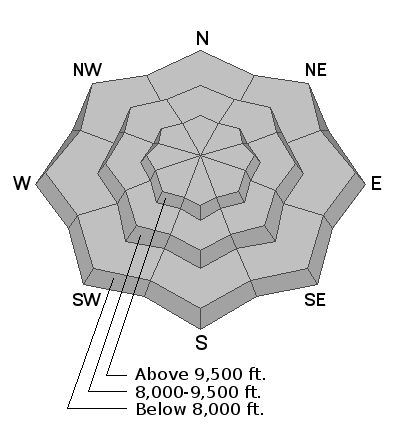The 14th Annual Utah Snow and Avalanche Workshop is virtual again this year and will be held Nov 5th (professional session) and Nov 9th, 10th, 11th evenings from 6-9 pm. More info and speaker lineup on our Events page
HERE.
Check all the upcoming education
HERE.Monday had very strong winds which quickly died down as precipitation began around 5 p.m. on Monday as rain in many places. That rain turned to snowfall Monday evening when the heaviest snowfall occurred. Snowfall continued for most of the day Tuesday with much of that snow falling as
graupel. The Alta Ski Patrol reported up to 0.5" of rain at 8500 feet at the onset of the storm although they like to call it "clear snow". Snowfall and water amounts are:
- Upper Cottonwood Canyons: 8-15" snow (2" water)
- Park City ridgeline: 4-8" snow (.5-1.5" water)
- Ogden area mountains: 4-9" snow (.4-1.1" water)
- Provo area mountains: 3-8" snow (.6-1" water)
Nearly hurricane-force winds eased Monday when precipitation started, and since then at 9000 ft have mostly blown from the west at 10-15 mph gusting 20-30 mph. Wednesday morning they shifted and began blowing a little from the west-northwest.
Today starts out with temperatures mostly in the low 20s F above 9000 ft. Skies will keep some clouds which will be slowly clearing, and temperatures should remain cool. Looking ahead this week, winds look calm and temperatures should warm considerably on Thursday before cooling again late Saturday when a chance for more snowfall returns.
Heads up - Although snow depths at upper elevations are 2-3 feet deep, the risk of hitting rocks or other buried objects remains high.
No avalanches were observed or reported yesterday; however, two groups reported long shooting cracks (an obvious sign of instability) on slopes with wind drifted snow. Drew and his partner experienced this in upper
Big Cottonwood Canyon and another group experienced it in upper
Little Cottonwood Canyon (photo below). Seeing shooting cracks tells us that if you were to get on a steeper slope with similar snow conditions, you would trigger an avalanche.








